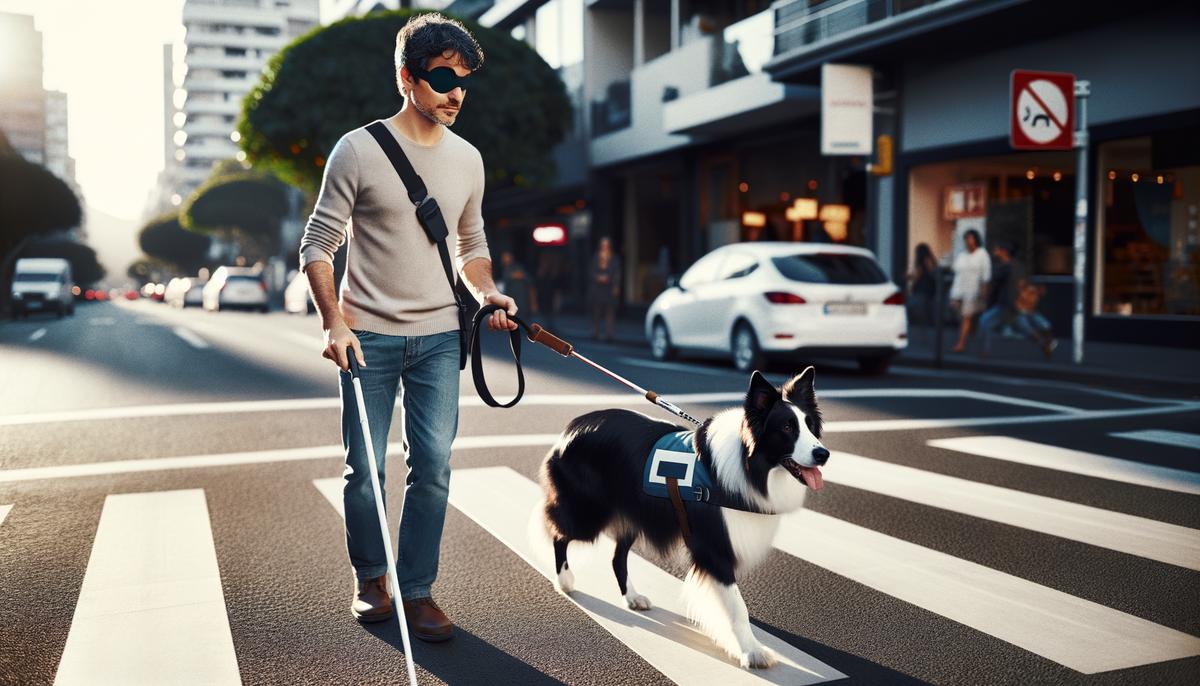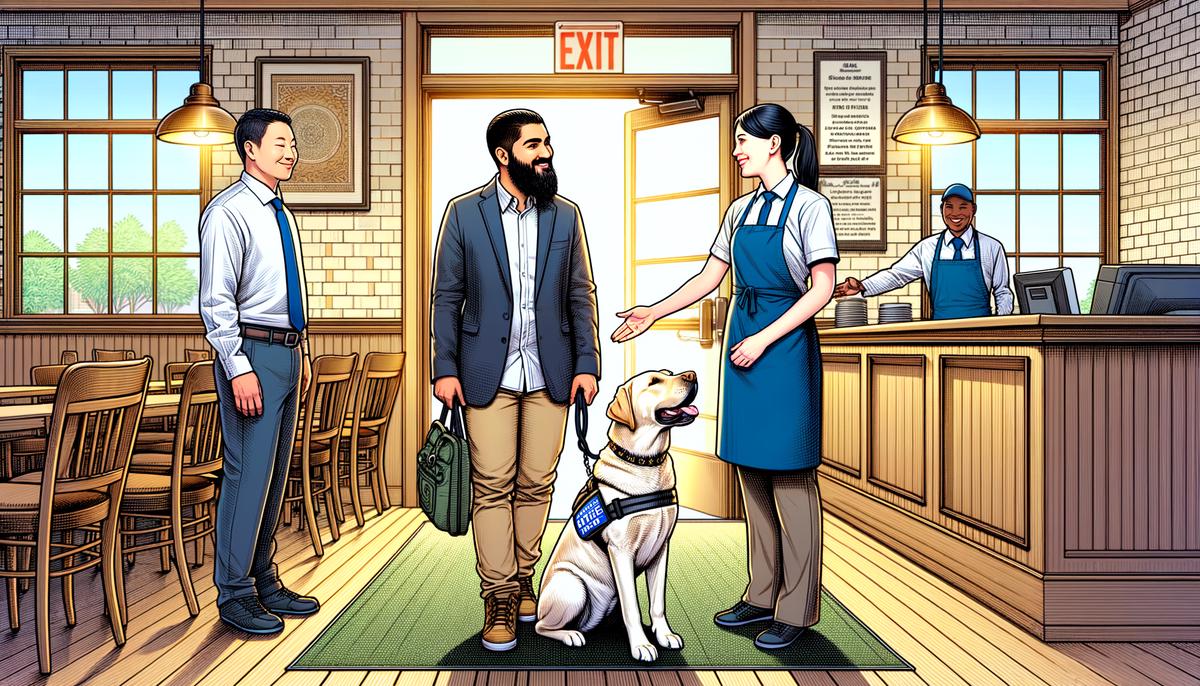Types of Service Dogs

Classification and Training of Service Dogs
Service dogs undergo specialized training to perform specific tasks for individuals with disabilities. These tasks range from guiding those with visual impairments to detecting blood sugar levels or providing tactile stimulation for anxiety. The American Disabilities Act (ADA) categorizes these animals as working dogs, distinguishing them from emotional support or therapy dogs, which do not have the same legal protections and access rights.
Training begins early, often when the dogs are puppies, focusing on socialization and basic obedience before moving into specialized tasks customized to their future handler’s needs. Successful service dogs possess qualities such as high trainability, a calm demeanor, intelligence, and consistent responsiveness to commands. Popular breeds that often meet these requirements include Golden Retrievers, Labradors, and Poodles.
Trainers consider various factors when evaluating a dog for service work, including health, temperament, and adaptability to new or challenging situations. Task training involves teaching the dog to perform specific actions required by their handler during day-to-day activities. Public access training prepares them to traverse various environments seamlessly and unobtrusively.
Service dogs’ unique capabilities are cultivated through repetitive and consistent training to ensure reliability in performing their duties. Mobility assistance dogs learn tasks like fetching dropped items, opening doors, and pressing buttons, while medical alert dogs are trained to sense and react to changes in their handler’s health conditions.
Training continues throughout the dog’s life to maintain skills and strengthen the bond between the dog and their handler. Refinement and adaptation in training approaches maximize the dog’s efficacy and ensure the safety and independence of their human partners. These rigorous training programs transform carefully selected breeds into lifelines for their handlers, offering independence, companionship, and emotional support.

Optimal Breeds for Service Roles
While Golden Retrievers, Labradors, and Poodles are often heralded as exemplary service dog breeds, other breeds also possess unique qualities that make them suitable for specific service roles.
German Shepherds are known for their intelligence, loyalty, and protective instincts, making them especially suitable for roles such as PTSD support or police service dogs. Their alertness and strong build provide physical assurance to their handlers in scenarios that demand a high level of security or emotional support.
Border Collies bring unrivaled energy and eagerness to please, which translate well into their training for sophisticated tasks. Their natural instinct to anticipate and manage movement makes them excellent guide dogs for visually impaired individuals. They quickly process commands and adapt to new challenges, allowing them to perform efficiently under various circumstances.
Poodles, chosen for their hypoallergenic coats and sharp intellect, have a dignified yet calm demeanor crucial for individuals needing stability, such as those with epilepsy who benefit from seizure alert dogs. Their sensitive nature and intuitive response to their owners’ emotional and physical states make them reliable in detecting health anomalies.
Larger breeds like St. Bernards and Great Danes bring necessary physical attributes such as size and strength, coupled with a gentle temperament, for those requiring mobility assistance. These dogs are capable of physically supporting their handler with mild assertiveness, avoiding harm while fulfilling tasks like bracing during walks or retrieving items.
Springer Spaniels excel as hearing dogs due to their inherent propensity to stay alert and responsive to auditory stimuli. Their manageable size makes them a fitting choice for individuals with hearing impairments, helping them perceive crucial sounds that might otherwise go unnoticed.
Each of these breeds showcases unique qualities that, when honed with precise and structured training, render them exceptional at enhancing the autonomy and quality of life of individuals with disabilities. Recognizing how particular characteristics can be channeled into meaningful roles underscores the importance of polishing raw canine potential into indispensable service dog excellence.

Legal Rights and Public Access
Under the Americans with Disabilities Act (ADA), service dogs are granted remarkable accessibility rights, ensuring that individuals with disabilities receive the support they need while participating in public life. This legislation mandates that service dogs are permitted to accompany their owners in all areas where members of the public are allowed, granting them access to environments that animals are typically forbidden from entering, such as restaurants, hotels, public transportation, and schools. The objective is to prevent discrimination that might isolate or deny a person with disabilities full participation in society.
Businesses and public facilities are required to make reasonable accommodations to facilitate the presence of a service dog, which often means bending no-pet policies and waiving restrictions that might limit entry. The ADA focuses on the question of efficacy rather than formality, stating that proof of certification or special identification for the service dog is not a prerequisite for access. Entities may only ask if the dog is required due to a disability and inquire about the specific tasks the dog has been trained to perform, ensuring the privacy and dignity of individuals with disabilities are respected.
The rights afforded by the ADA come with responsibilities for both the handler and the service dog. The dog must be under control at all times and should not demonstrate any howling behaviors. Control might mean being tethered, harnessed, or leashed, unless these devices interfere with the service dog’s tasks or the individual’s disability prevents utilizing such aids. In those situations, the handler must maintain control through voice commands, signals, or other effective measures.
Despite these comprehensive legal protections, instances of discrimination occasionally occur due to misunderstandings about the law among public and private business operators. The Department of Justice periodically revises and circulates new guidelines to help educate businesses and the general public about ADA compliance.
Handlers must know these laws and rights to advocate effectively for themselves and their service dogs, challenging unnecessary refusals or requests and fostering a more inclusive and accessible environment for everyone. Ongoing education upholds the legal provisions and normalizes the presence of service dogs in all facets of social life, enhancing the quality of life for many individuals with disabilities.

Service Dogs by Type and Function
Guide dogs provide invaluable assistance to individuals who are blind or visually impaired. They are trained to lead their handlers around obstacles and through public spaces, enabling them to traverse their environments safely and confidently. Training for guide dogs begins with basic obedience and gradually incorporates more complex skills such as stopping at curbs, avoiding overhead obstacles, and leading a person to requested locations.
Hearing dogs offer crucial service for individuals who are deaf or hard of hearing. They alert their handlers to a variety of household sounds, such as:
- doorbells
- smoke alarms
- telephone rings
- a baby’s cry
by making physical contact and then leading their handler to the source of the sound. Their training involves learning to distinguish between sounds and mastering a consistent alerting method.
Psychiatric service dogs support individuals with mental health conditions such as depression, anxiety, and post-traumatic stress disorder. They perform tasks that help mitigate their handler’s psychiatric condition, such as providing tactile stimulation to alleviate acute anxiety, reminding a handler to take medication, interrupting harmful behaviors, or performing room searches for security checks. Training for psychiatric service dogs is customized to the specific needs of the handler, focusing on responsiveness and sensitivity to emotional fluctuations.
Mobility assistance dogs support individuals with physical disabilities by performing tasks such as opening doors, retrieving dropped objects, or aiding with clothing removal. Diabetic alert dogs are trained to detect low or high blood sugar levels through scent and alert their handler before these reach dangerous levels. Seizure alert and response dogs can signal the onset of an epileptic seizure and help ensure their handler’s safety during and after a seizure. These dogs undergo training that focuses on timing, scent detection, and physical task performance, all customized to the needs of their handler’s conditions.
Each type of service dog undergoes a customized training regimen designed to maximize their ability to assist with specific disabilities. This rigorous training ensures the execution of physical tasks and cultivates a deep bond between the dog and their handler, which is critical for the effective performance of their duties. The relationship between a service dog and their handler is built on trust and mutual reliance, making these dogs much more than just helpers — they are partners in overcoming the challenges imposed by various disabilities.



